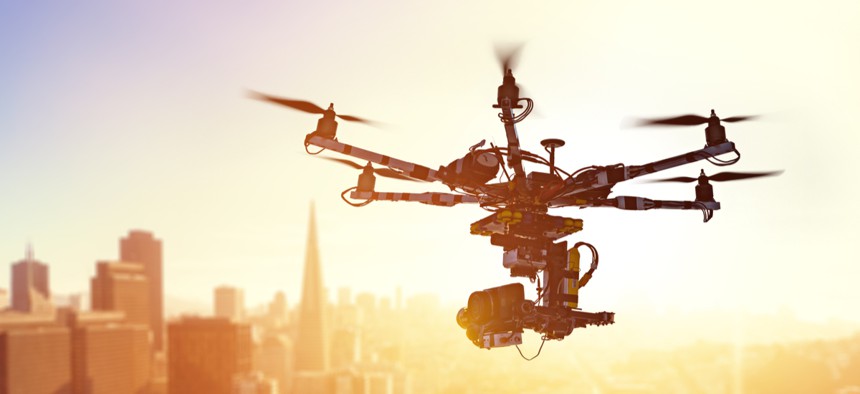Interior Expects to More Than Triple Drone Flights by 2025

Alex Yuzhakov/Shutterstock
Unmanned aircraft offer the department a cheaper, faster and safer way to conduct operations across 500 million acres of federal lands.
The Interior Department has to cover a lot of ground to meet its mission, and in the years ahead, officials expect to lean more heavily on drones to manage the 500 million acres of land under their purview.
The agency logged 10,342 unmanned aircraft flights last year, using drones to monitor wildlife, survey federal lands, respond to natural disasters and conduct a wide variety of other activities. By 2025, officials expect that figure to more than triple to 35,724 flights, according to an internal document published last week.
The projection, based on input from all nine Interior components, shows leaders fully embracing a technology that until recently remained largely in the experimental phase. Between 2006 and 2016, the agency’s drone program never exceeded 750 annual flights.
Unmanned aircraft offer Interior a cheaper, faster and safer way to conduct operations in the field, particularly those that involve collecting data on federal land, according to Interior officials. Drones can complete data collection missions in one-seventh of the time and at one-tenth of the cost when compared to human personnel, officials said, and because many of those operations occur on rugged terrain, they also help keep employees out of harm’s way.
Last year, officials estimated drones saved the agency some $14.8 million. Those cost-savings will only increase as the aircraft become more prevalent in Interior’s day-to-day operations, Mark Bathrick, director of the agency’s Office of Aviation Services, told Nextgov in April.
Unmanned aircraft have also yielded some unanticipated benefits, he said, like enhancing the agency’s ability to fight wildfires and respond to other natural disasters.
As Interior looks to ramp up its drone operations, it’s looking beyond the U.S. to expand their fleet.
The agency recently authorized officials to buy aircraft from SZ DJI Technology, a Chinese firm that owns nearly three-quarters of the global drone market. DJI aircraft are significantly cheaper than their American-made counterparts, offering the agency a cost-effective way to scale up their operations.
However, the business relationship is extremely limited because DJI is one of the many Chinese firms that national security experts have accused of secretly feeding data on U.S. customers to the Chinese government. In a conversation with Nextgov in July, Bathrick said the department is taking a number of technical precautions to prevent the company from getting a literal bird’s eye view of America’s critical operations.
“It’s important for us to select drones that have the ability to scale to meet the increasing demands of our bureaus and other partners,” Bathrick said at the time.
“For those of us who have a responsibility to not only our agencies but the American public to go out and perform these missions … the only option is to collaborate with industry and collaborate with our federal partners and chart a path forward that is as secure as technically possible,” he added.






